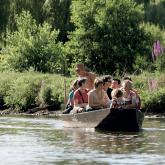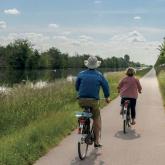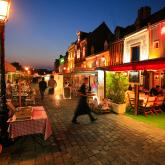Discover Amiens’ heritage
OVER THE CENTURIES, AMIENS HAS AFFIRMED ITS AVANT-GARDE CHARACTER WHILE REMAINING ATTACHED TO ITS FABULOUS HERITAGE. DRAWING ON THE PAST TO BUILD THE FUTURE IS ITS PHILOSOPHY. THIS IS WHAT GIVES IT ITS RICHNESS, ITS DEPTH AND ITS ORIGINALITY.
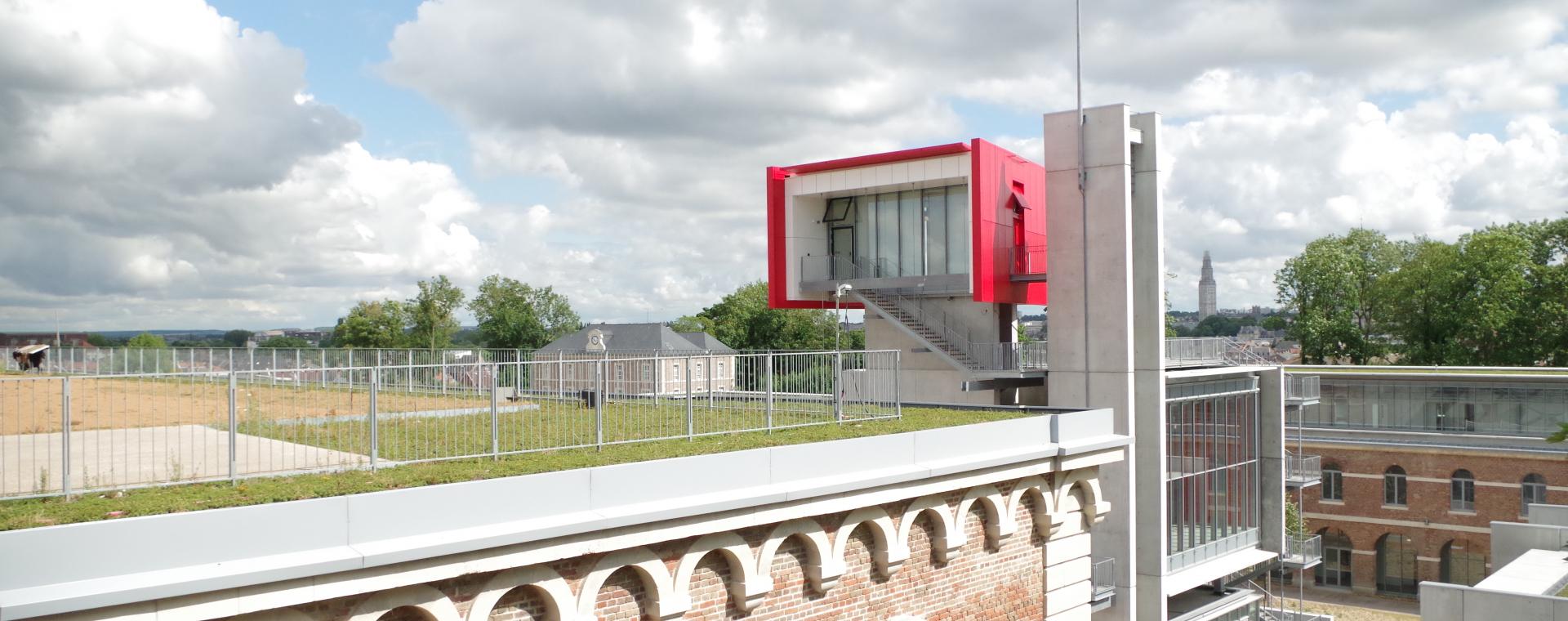 Citadelle© C.Lefort
Citadelle© C.LefortCitadelle - Rue des Français Libres
Place d'Armes/Governor's quarters/Barracks with a climb to the top of the ramparts for a panoramic view of the town.
Wanted by Henri IV following the capture of Amiens by the Spanish in 1597. Renovated by the famous architect Renzo Piano, it is now "delivered" to students...
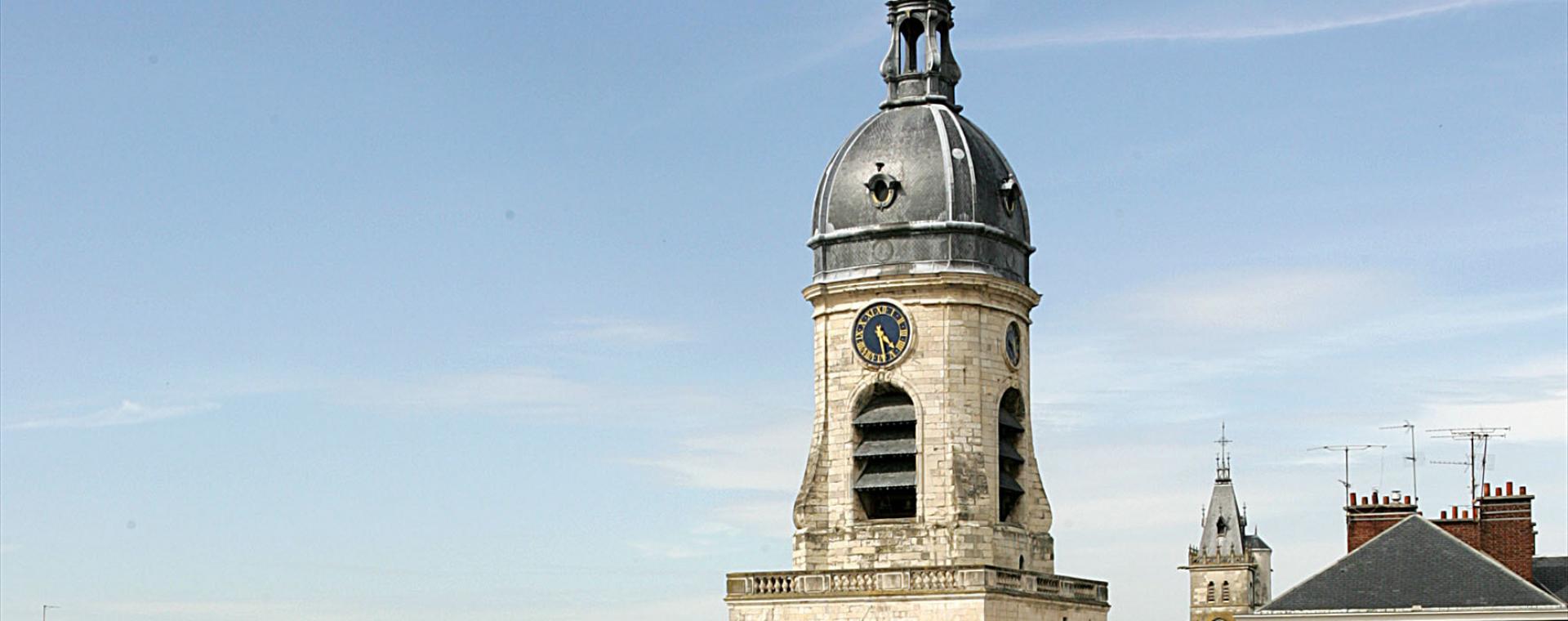 Beffroi© Amiens Métropole
Beffroi© Amiens MétropoleBelfry
Place au Fil
Listed as a UNESCO World Heritage Site since 2005, its base dates back to the 12th century. It is the symbol of the acquisition of the status of commune and thus of the emancipation of the power of the king and the clergy.
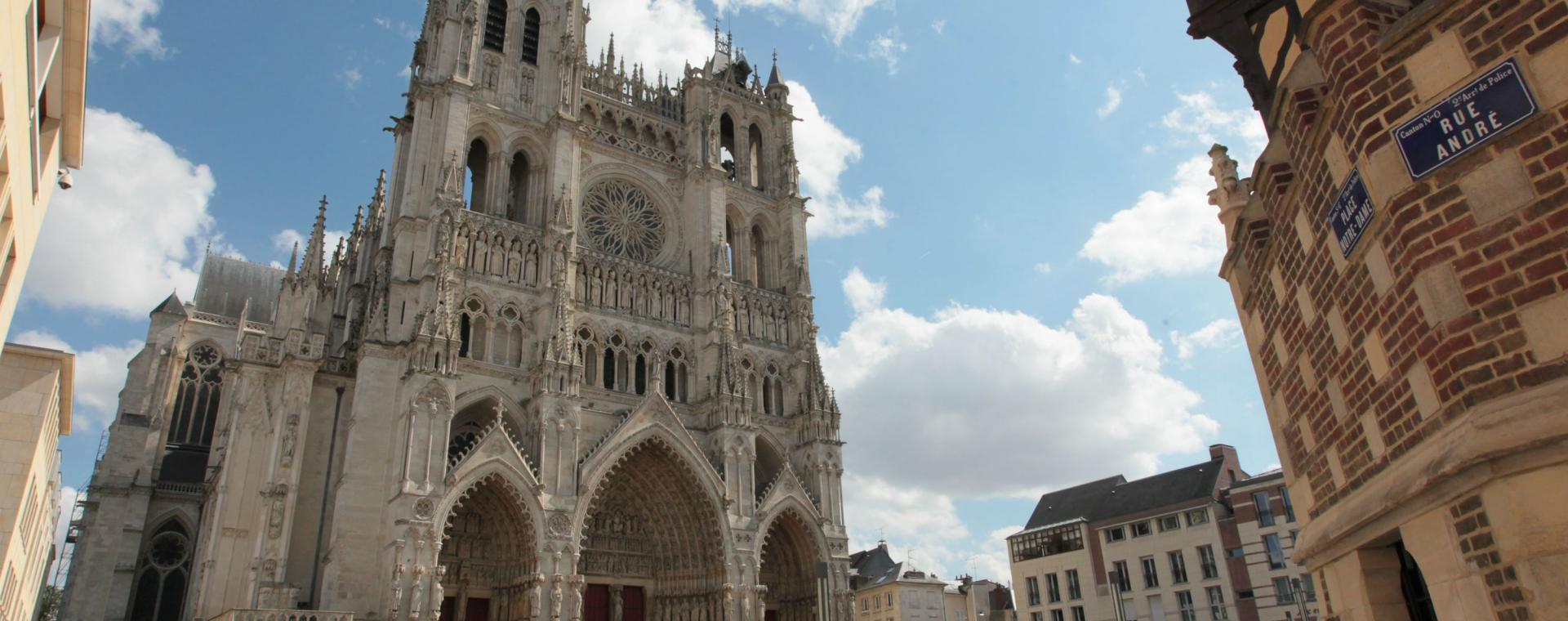 Cathédrale© S.Coquille
Cathédrale© S.CoquilleCathedral
Place Notre-Dame
The largest cathedral in France with its 200,000 m3 (Notre-Dame de Paris = 95,000 m3). It was listed twice as a UNESCO World Heritage Site in 1981 as a masterpiece of Gothic art and then in 1998 as a stopover on the pilgrimage route to Santiago de Compostela. It celebrated its 800 years in September 2021...
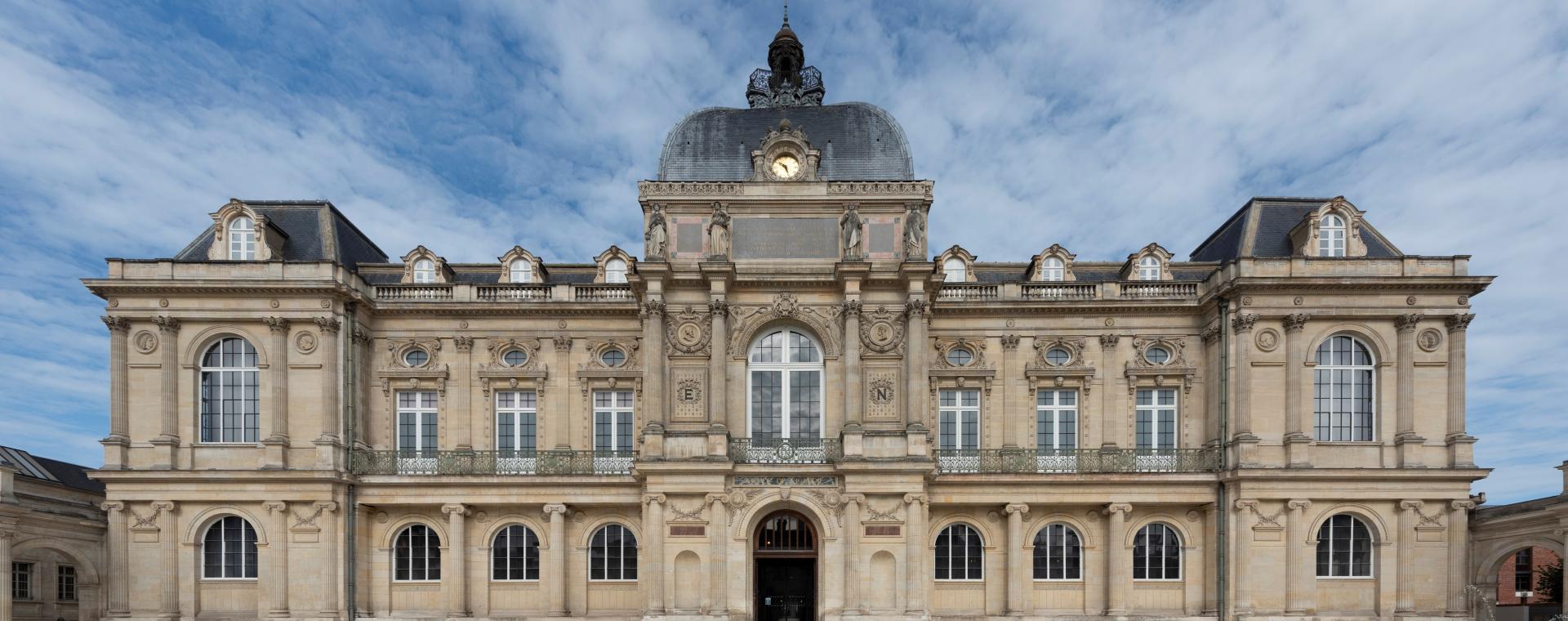 Musée de Picardie© alice_sidoli
Musée de Picardie© alice_sidoliMusée de Picardie - Puvis de Chavannes
In the Napoleon III style, it was the first building to be built as a museum in its own right... One of the most beautiful museums in the province, it is thought of as a mini Louvre! It is literally a Palace of Fine Arts.
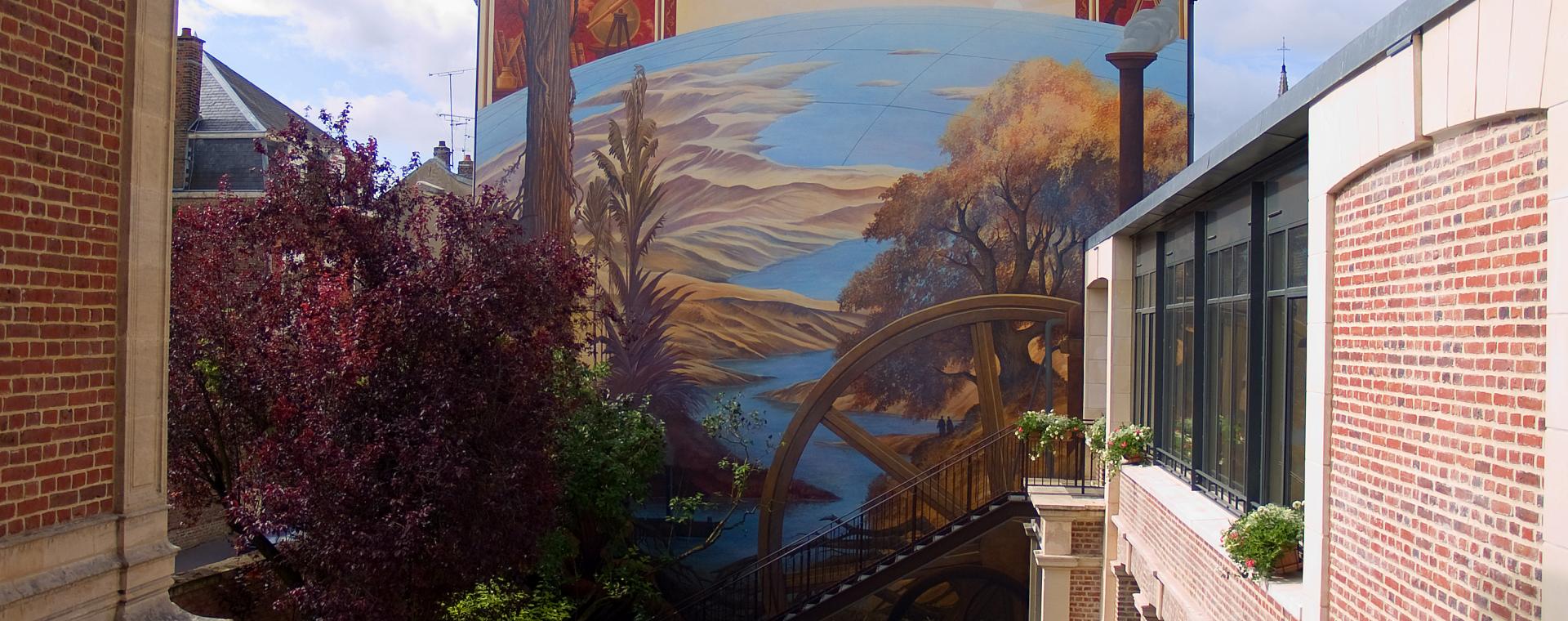 Maison de Jules Verne© ADRT80-Ab
Maison de Jules Verne© ADRT80-AbMaison de Jules Verne -
Rue Charles Dubois
Tower with armillary and fresco by François Schuiten. The world's most translated French author lived here for 18 years and wrote most of his Extraordinary Journeys!
It has been awarded the label Maison d'Ecrivain, Maison des Illustres...
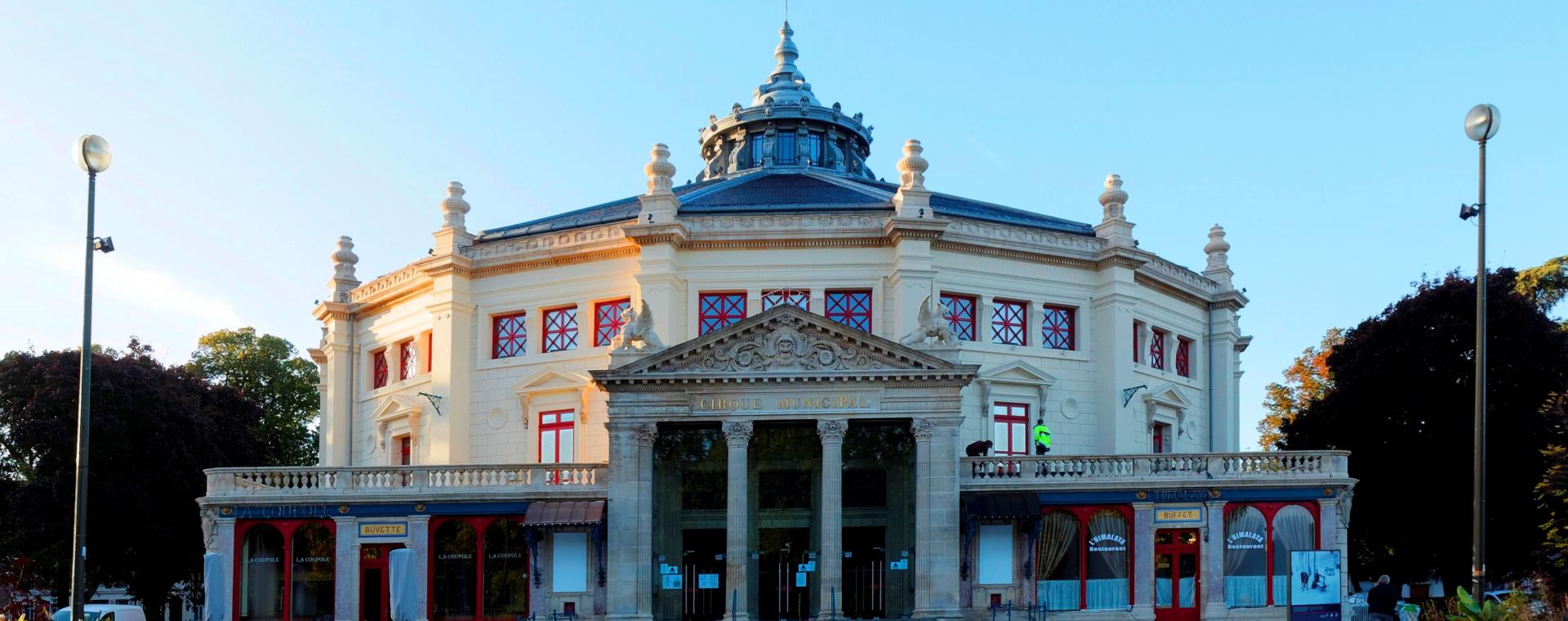 Cirque Jules Verne© L.Rousselin
Cirque Jules Verne© L.RousselinCirque Jules Verne - Place Longueville
Inaugurated by the writer in 1889 in his capacity as an elected official, it is one of the few remaining permanent circuses in France. It houses a National Centre for Circus Arts where circus arts are taught... Some famous films have been shot here with directors Fellini and JJ Beinex!
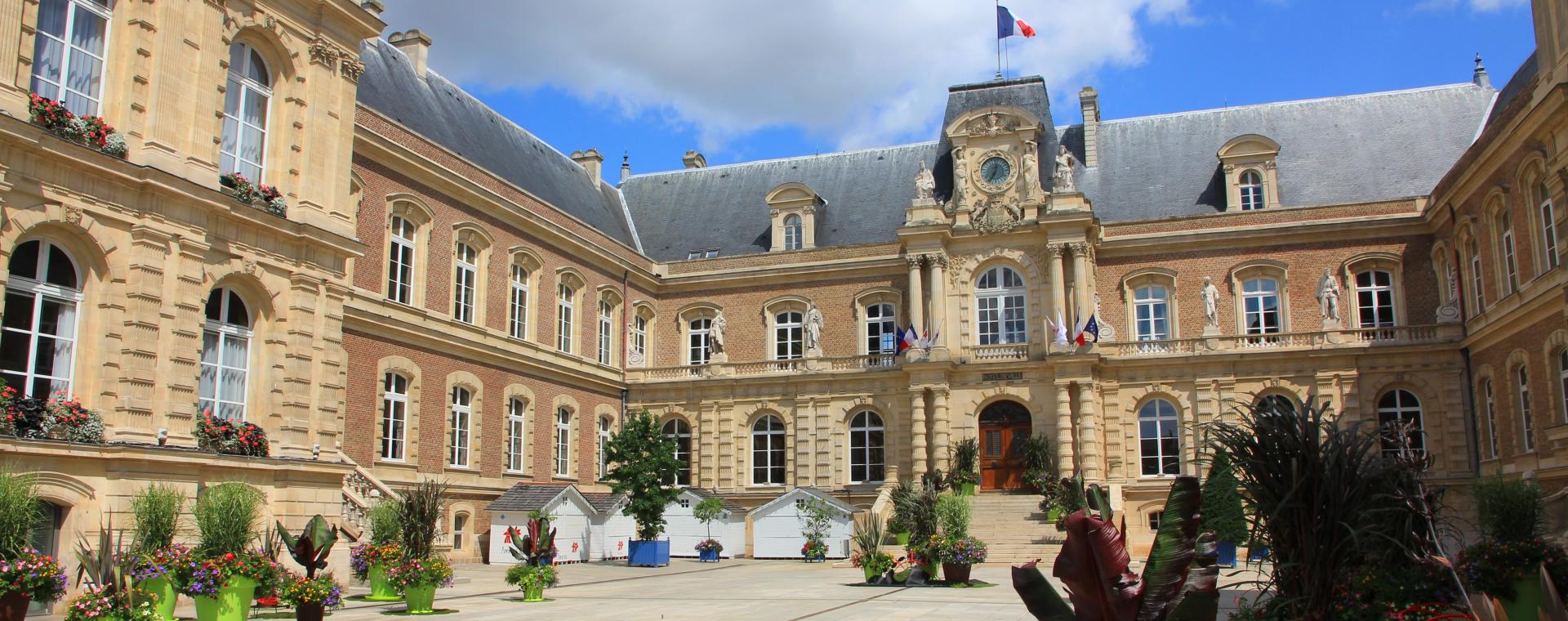 Hôtel de ville© S.Crampon
Hôtel de ville© S.CramponHôtel de Ville - Place de l’Hôtel de Ville
Building from the 18th and 19th centuries. The building is made of brick and stone. The facade overlooking the belfry has two levels. Made of white stone, it is in the neoclassical style. The dormer windows in the middle are joined by the town's coat of arms.
At the front, on the first floor, a gallery gives access to the reception rooms. The Peace of Amiens was signed here in 1802 between the United Kingdom on the one hand and France, Spain and the Dutch Republic on the other. This peace only lasted thirteen months!
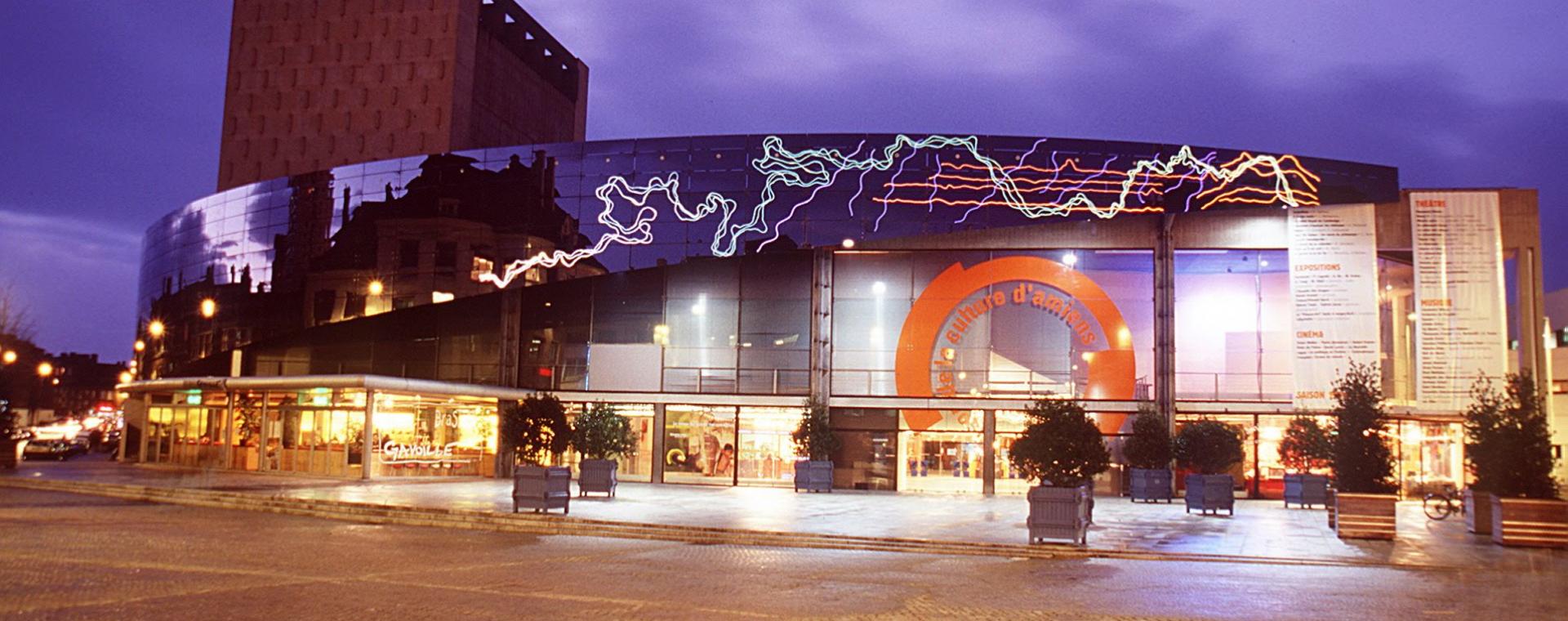 Maison de la cultureAmiens Métropole
Maison de la cultureAmiens MétropoleMaison de la Culture - Place Léon Gontier
The first House of Culture built in France, inaugurated in 1966 by André Malraux. Familiarly called the "MACU" by the people of Amiens, it is a European centre for artistic and cultural creation, production and distribution. It offers theatre and dance performances, concerts, a film programme and contemporary art exhibitions. The only national stage in the former administrative region of Picardy!
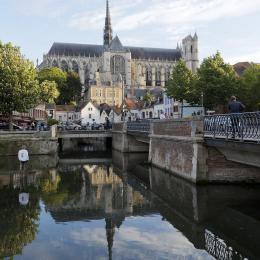
SAINT-LEU DISTRICT
The historic heart of Amiens, once known as the Little Venice of the North, is a picturesque district with its colourful traditional houses, its craftsmen, its bars and restaurants whose facades are reflected in the water of the canals. It is also the district of the students and the night owls.
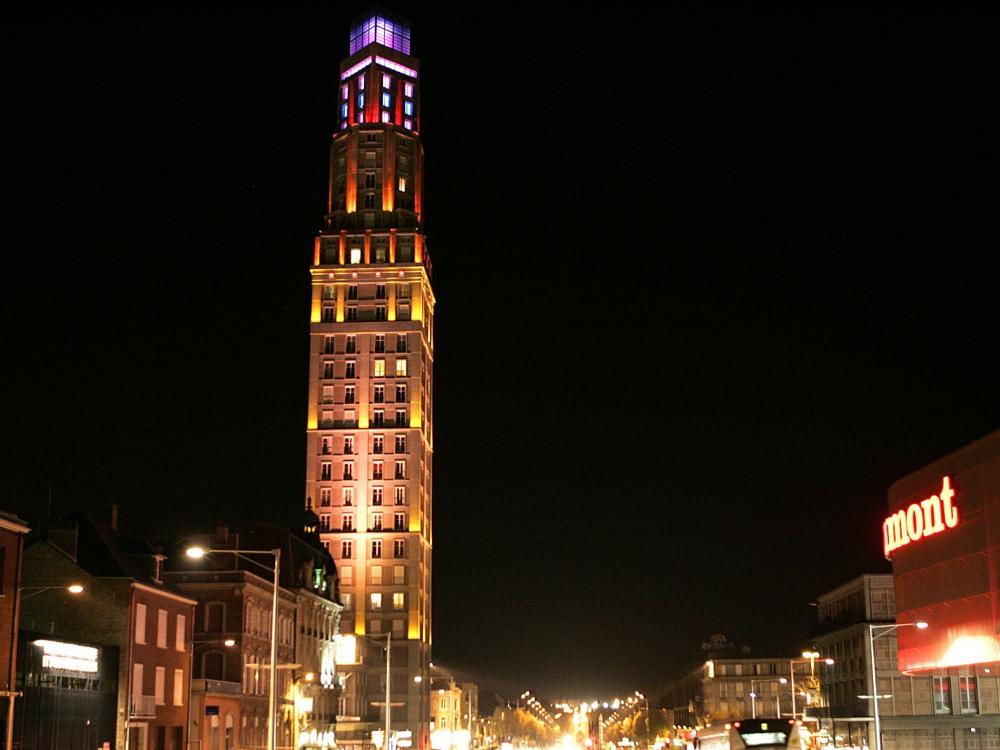 Tour Perret - © L.Rousselin
Tour Perret - © L.RousselinTour Perret -
Place Alphonse Fiquet
At the time (1949), this tower was an achievement in the use of reinforced concrete. It was the first French concrete building over 100 metres high. When it was built, it was considered the "first French skyscraper". Initially 104 metres high and 30 floors, it was raised to 110 metres at the beginning of the 21st century. It was also equipped with an "hourglass of light" in 2005. It was for a long time the highest skyscraper in Western Europe...
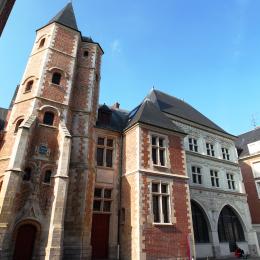
Square Jules Boquet
The Logis du Roi (King’s Residence)
This is a brick and stone building from the early 16th century, with a polygonal tower housing a spiral staircase. It takes its name from the stay of Louis XIII. It is in the flamboyant gothic style. It is the property of the University of Picardy Jules Verne.
Maison du Sagittaire
This 16th-century house was once a shop. Located in the rue des Vergeaux near the present-day post office, it was destroyed during the German bombing of 19 May 1940. After the war, the facade was dismantled stone by stone and erected in front of a new building next to the Logis du Roi.
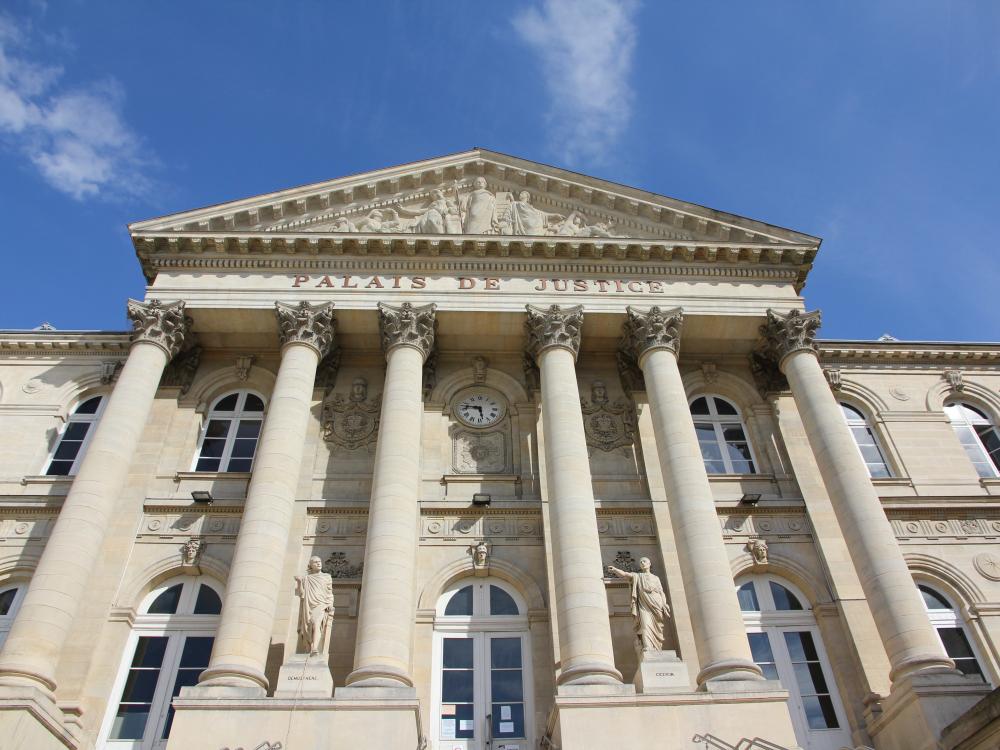 Palais de Justice - © S.Crampon
Palais de Justice - © S.CramponPalais de Justice - Square Jules Boquet
The Palais de Justice was built in two campaigns: from 1864 to 1868 and from 1874 to 1880, directed by the architects Jean Herbault and Natalis Daullé, then by Jacques Hittorff. It was the first building in France designed exclusively for the function of a courthouse. All levels of territorial jurisdiction were brought together in one place. The imposing brick and stone building is in the neoclassical style. The sculptures on the pediment represent Justice and the statues at the top of the entrance staircase represent Demosthenes, Cicero, Law and Force.
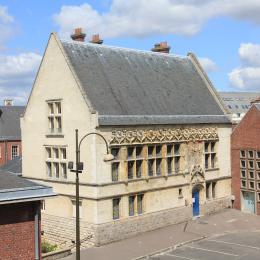
Maison du Bailliage
Rue de la Malmaison
The present building, built in 1541, was the seat of royal justice until the French Revolution. The Bailliage of Amiens, created by King Philippe Auguste in 1193, was one of the oldest and most important in the Kingdom. The building was destroyed by German bombing on 19 May 1940, only the façade remains.
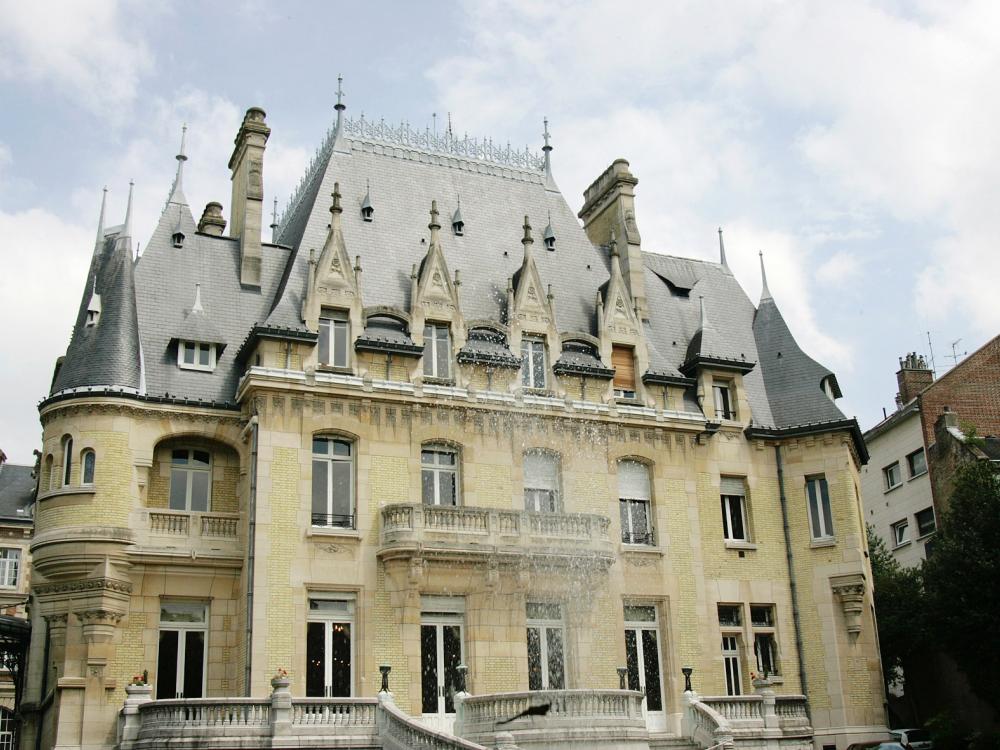 Hôtel Bouctot-Vagniez - © L.Rousselin
Hôtel Bouctot-Vagniez - © L.RousselinHôtel Bouctot-Vagniez
Rue des Otages
The Bouctôt-Vagniez mansion is typical of the Art Nouveau style. It was commissioned by a young couple: André Bouctôt, an investor, and Marie-Louise Vagniez, a descendant of a textile family from Amiens.
The construction lasted from 1909 to 1911 and cost about one million gold francs. In 2018, the CCI Picardie sold the Bouctot-Vagniez hotel and its extension to the Compagnie de Phalsbourg, which plans to transform it into a luxury hotel.
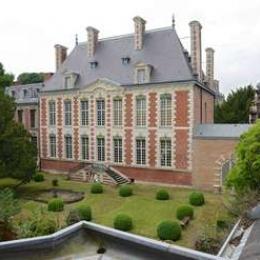
Hôtel de Berny
Rue Victor Hugo
Built between 1633 and 1634 for the Treasurers of France of the Generalitat of Picardy, the Hôtel de Berny is in the Louis XIII style, i.e. built in brick and stone, with a large main building and two pavilions. The museum was created thanks to a bequest made to the town in 1957 by Gérard de Berny, former senator of the Somme, so that it could open a museum on the art and history of the region to the public.
This monument is currently being restored...
Parks and gardens
 OTCAM - A. de Francqueville
OTCAM - A. de FrancquevilleLes Hortillonnages - Chemin de Halage
300 hectares of market gardening plots intersected by 65 km of canals. They cover 4 communes: Amiens, Camon, Longueau and Rivery. In the past, they were only market gardens. Today,
there are only a handful of hortillons cultivating the black and fertile soil of the site. Many plots have become parks.
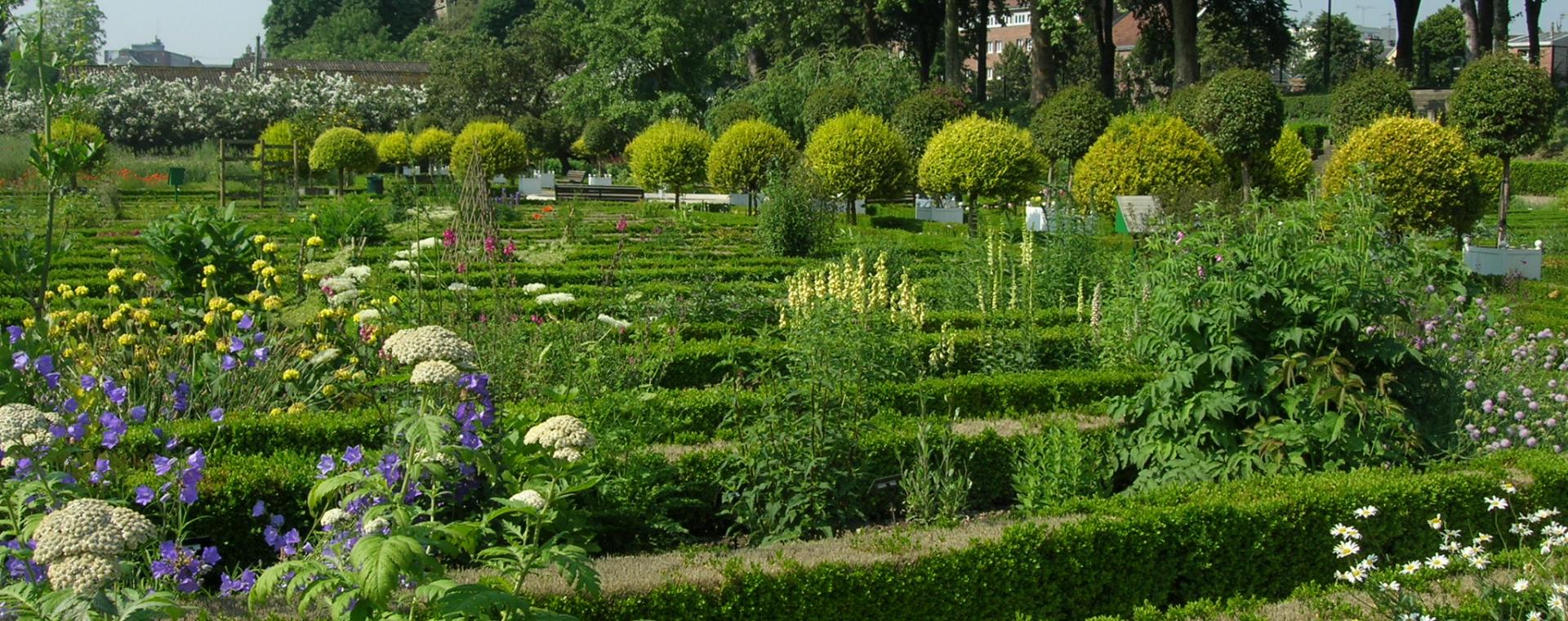 Jardin des Plantes© Amiens Métropole
Jardin des Plantes© Amiens MétropoleJardin des Plantes - Boulevard du Jardin des Plantes
One of the oldest botanical gardens in France. In 1751, the Jardin du Roy was ceded by Louis XV to create a Jardin des Plantes. The number of greenhouses increased, notably with the construction of the Napoleon III greenhouse.
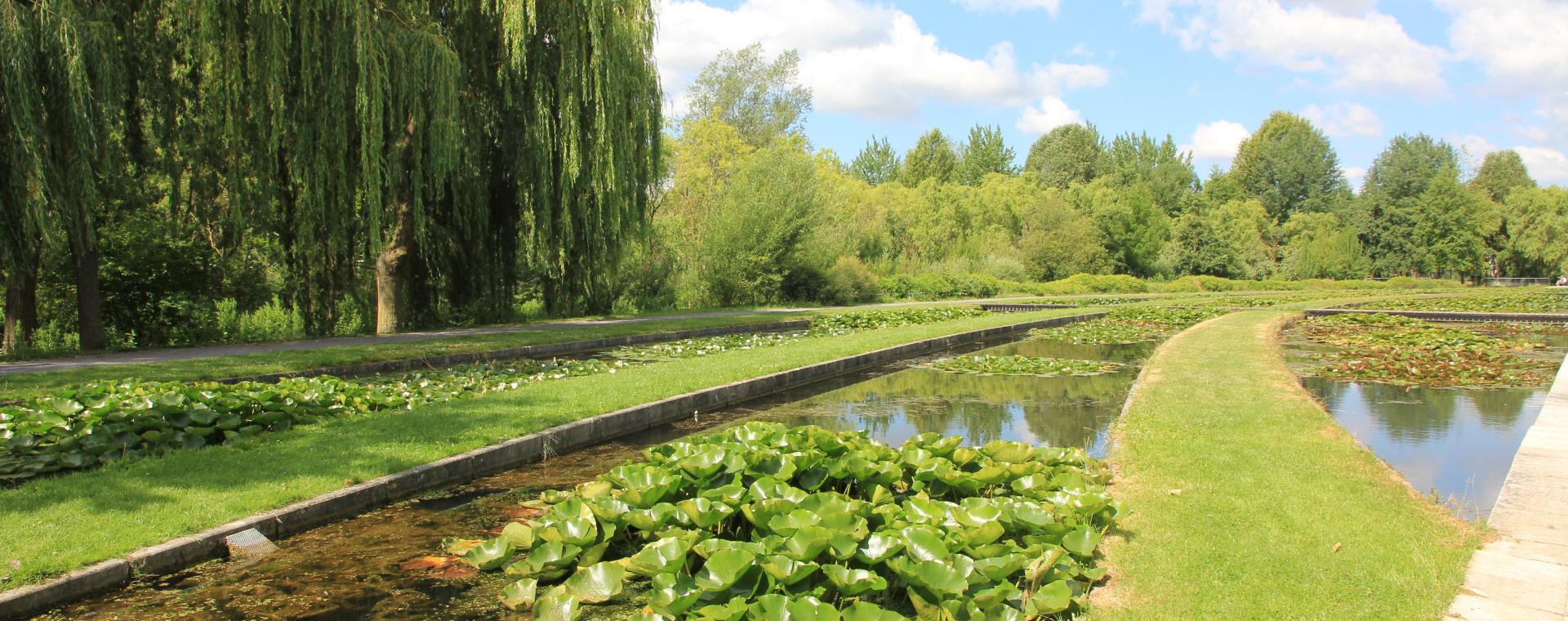 Parc Saint-Pierre © Samuel Crampon
Parc Saint-Pierre © Samuel CramponParc Saint Pierre - Boulevard de Beauvillé
The Saint-Pierre Park is THE park known to every Amiénois, a stone's throw from the city centre, a must for relaxation and leisure for the whole family!
Created in 1993 by the landscape designer Jacqueline Osty, this green and watery setting extends over 22 hectares, on the banks of the Somme canal, near the old Saint-Leu district and the Saint-Pierre suburb.
The view of the Cathedral and the Perret Tower is breathtaking. It was awarded the urban development prize in 1994.
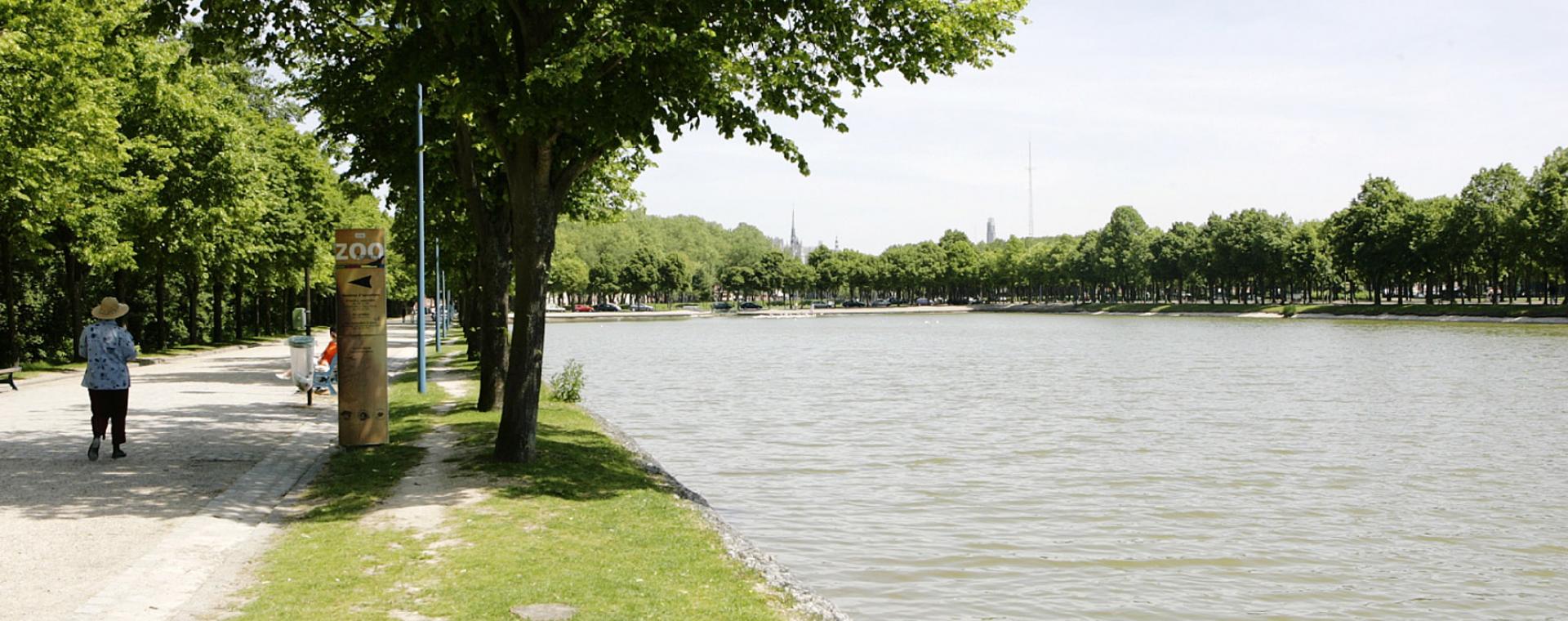 Le Parc de la Hotoie© L.Rousselin
Le Parc de la Hotoie© L.RousselinParc de la Hotoie - Esplanade de la Hotoie
The oldest in the city. Built in the 18th century. A place for walks, relaxation and sports for the people of Amiens. Water features and a playground for children. At the end of the 20th century, the entrance gates to the town hall were dismantled and reassembled at the eastern entrance to the park.
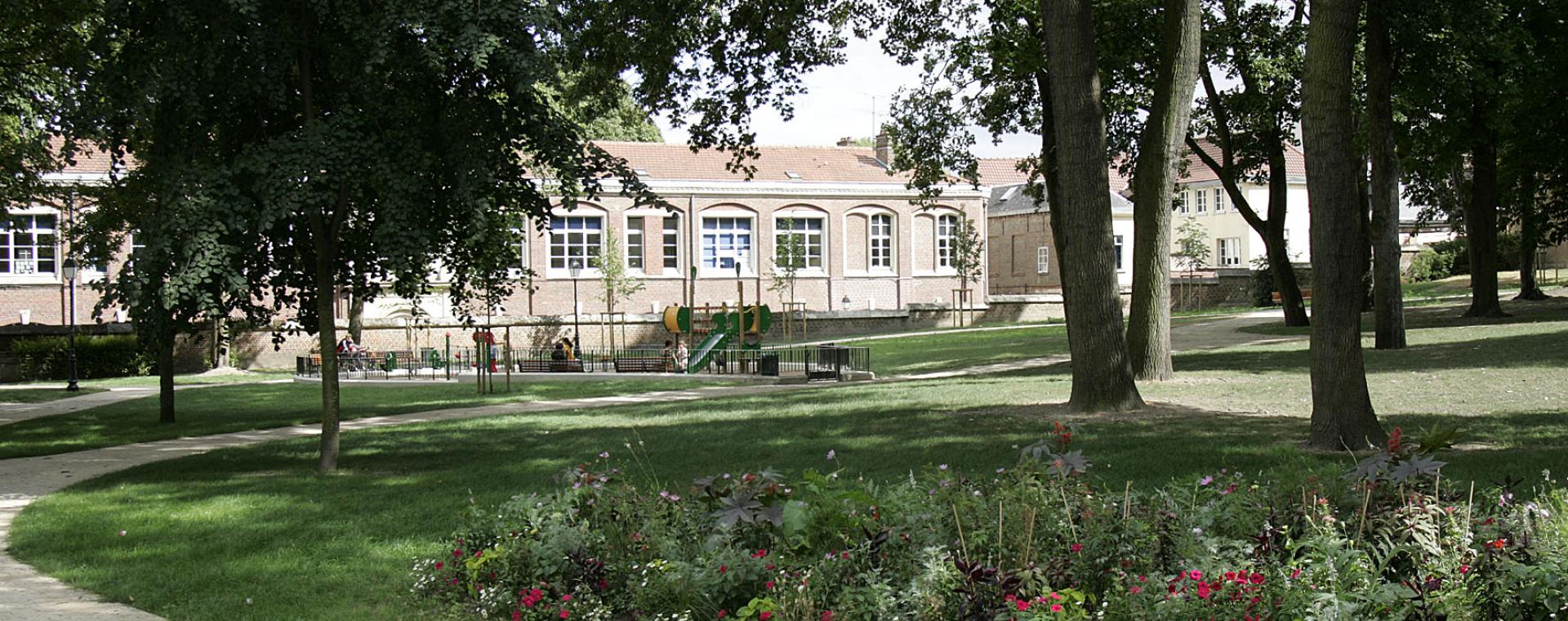 Photo du jardin de l'évêché, AmiensS. Coquille
Photo du jardin de l'évêché, AmiensS. CoquilleParc de l'Evêché - Place Saint Michel
This is an English-style garden linking the Place Saint-Michel (with the statue of the Amiens Saint Peter the Hermit) to the cathedral square and the Saint Leu district via a footbridge. It offers beautiful views of Notre Dame, the spire, the north side of the building and leads to the former episcopal palace, the bishop's former residence and now the Ecole Supérieure de Commerce.
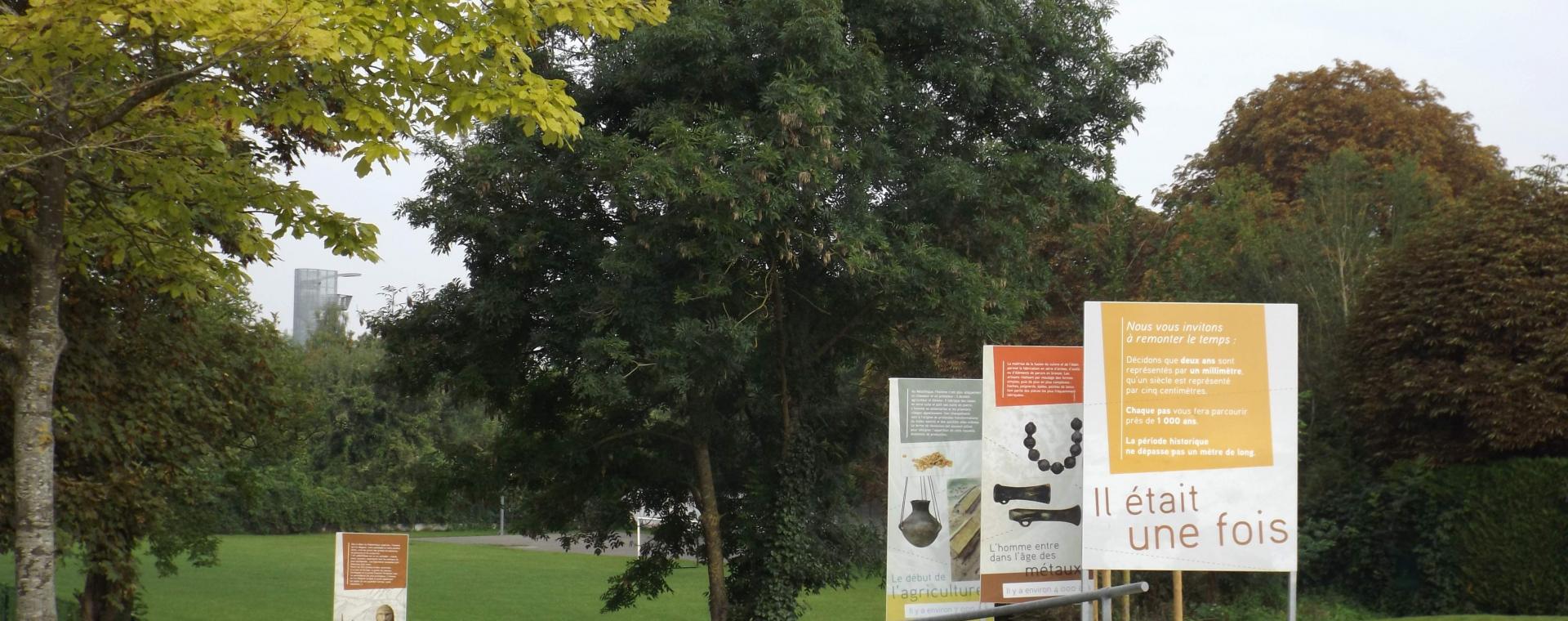 Jardin archéologique de Saint-AcheulAMAH
Jardin archéologique de Saint-AcheulAMAHThe Saint-Acheul Archaeological Gardens -
Rue Raymond Gourdain
This is a public garden laid out to highlight the archaeological site which gave its name to a prehistoric culture: the Acheulean.
An access path lined with explanatory panels on the history of the evolution of humanity allows access to the geological section which constitutes the major element of the site. Approximately 60 m long, this section shows the different layers of sedimentary deposits accumulated over the last 450,000 years...







